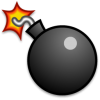Moisture on Surfaces in iRay
 Bomber
Posts: 121
Bomber
Posts: 121
In iRay, if I wanted to make a wet rocky surface, how would I go about that?
Like this: https://c1.staticflickr.com/9/8037/7972629846_b0999c230d_b.jpg


Comments
You can basicly do it with corresponding glossy parameters directly.
Or you use the topcoat section.
Try these:
Select the object and go to Create>iray Decal Node. In the decal's properties change the Face Mode to 'Front And Back', and Projection Type to Cubic. Scale the decal node so that it's bigger than the object. Then go to the Surfaces tab and select both the Front and Back surfaces and add one of the Liquid Water shaders.
Another option is to use the Top Coat layer, change the Top Coat Layering Mode to Fresnel, make the Refractive Index 1.33.
Thanks guys! I'll try those!
Bear in mind that rock can be porous and darken where it's wet. You might need to darken the diffuse colour.
That's okay! I was hoping to get this effect on streets and food too. It'll differ for every obect.
thank you for that
now i am having a new toy to play with
iray decal nodes
does it work like just one big geoshell ?
Kind of. You have no option to switch off individual groups of surfaces, but they pick up the underlying bump and normals while overriding the underlying glossiness, etc. You can also limit them by translating and scaling the decal's bounding box. They can also use the object's UVs instead of the usual projections, but they will place the decal across the entire surface so you need to experiment. You can use cutout to stencil them, so if you had a generic dirt shader you could use speckles and scratches cutout maps, etc, to add dirt across an entire object.
What I also do at times is apply a decal to a geometry shell with individual surfaces switched off where I don't want the decal to show, and make the geometry shell surfaces completely transparent.